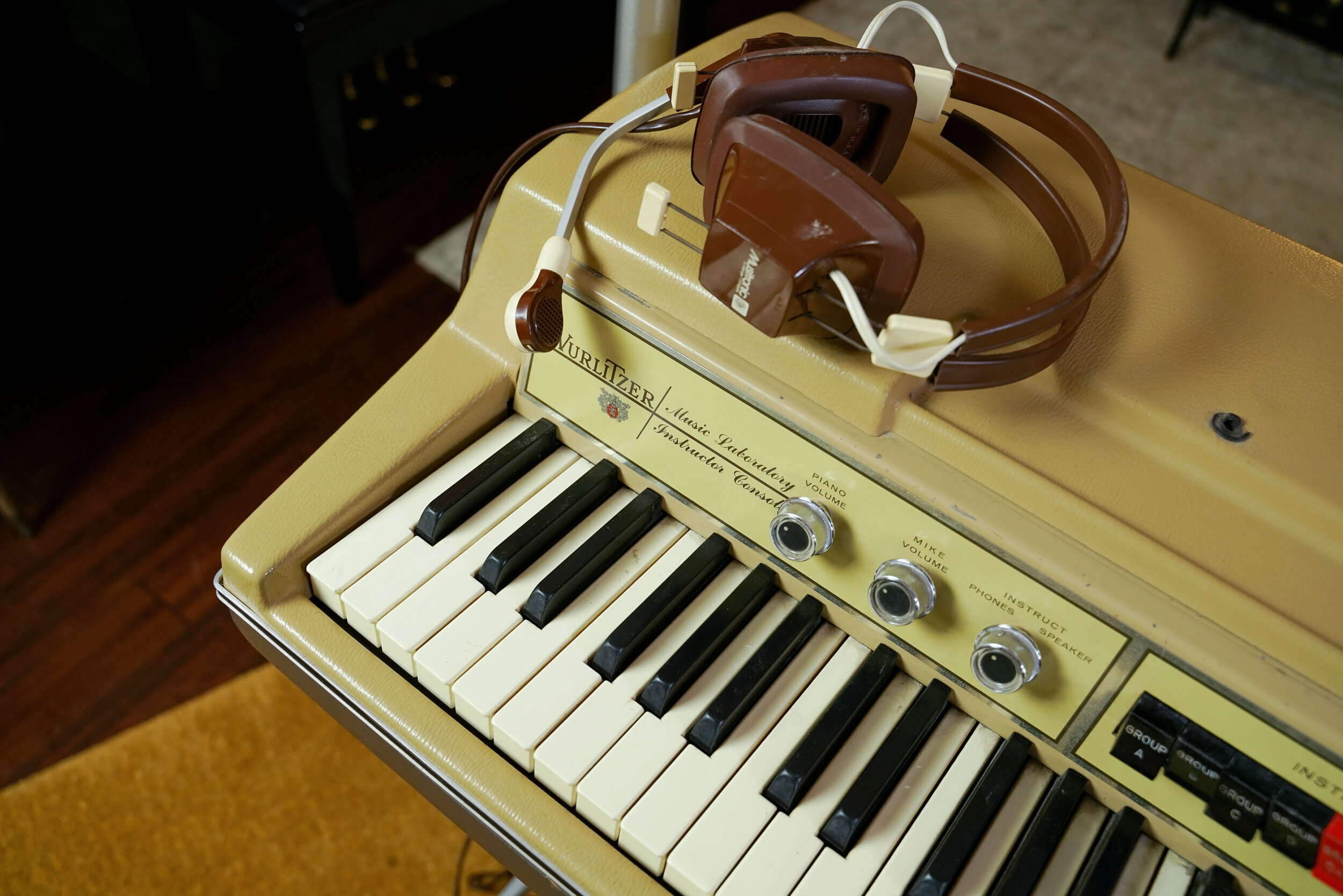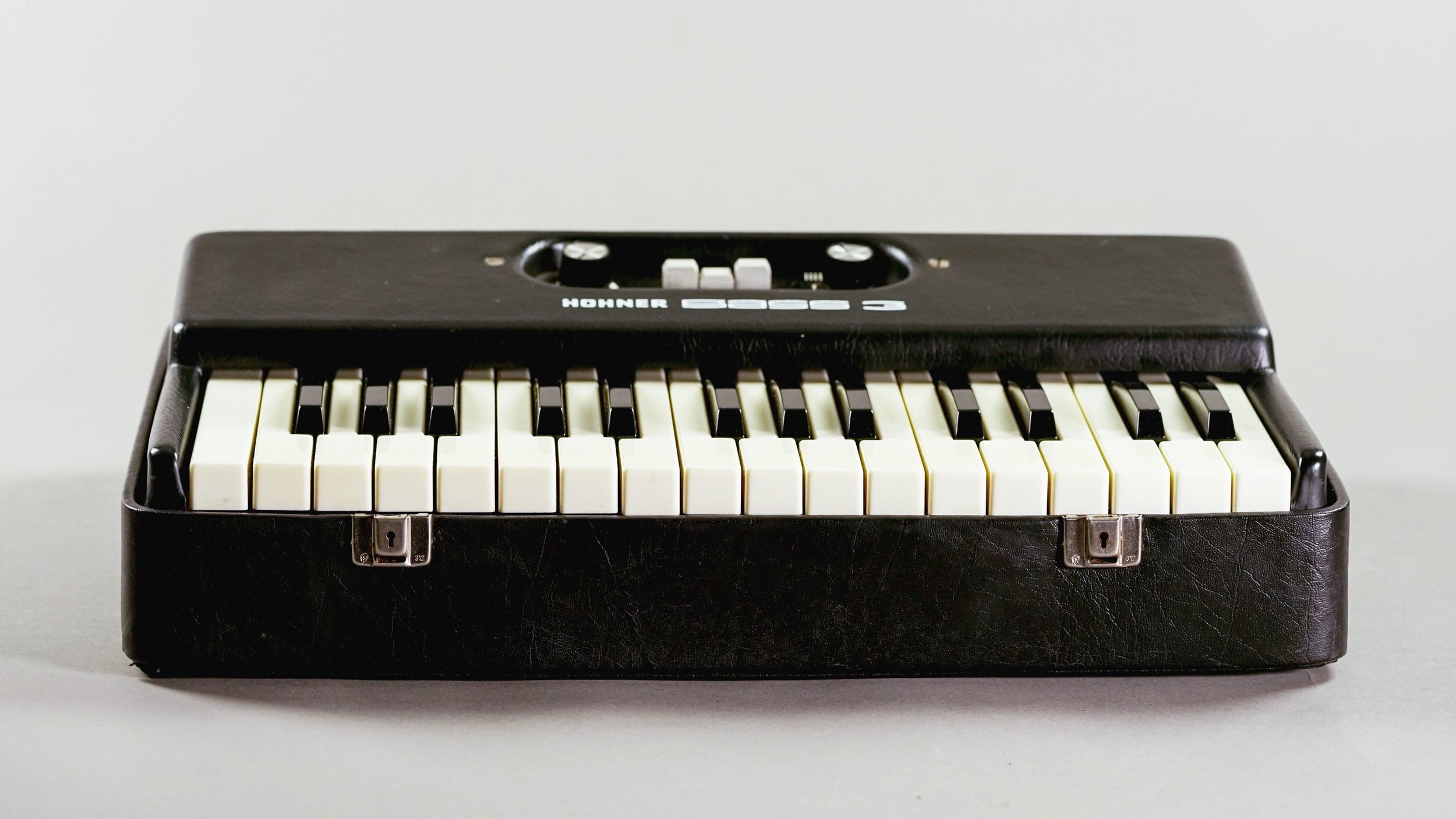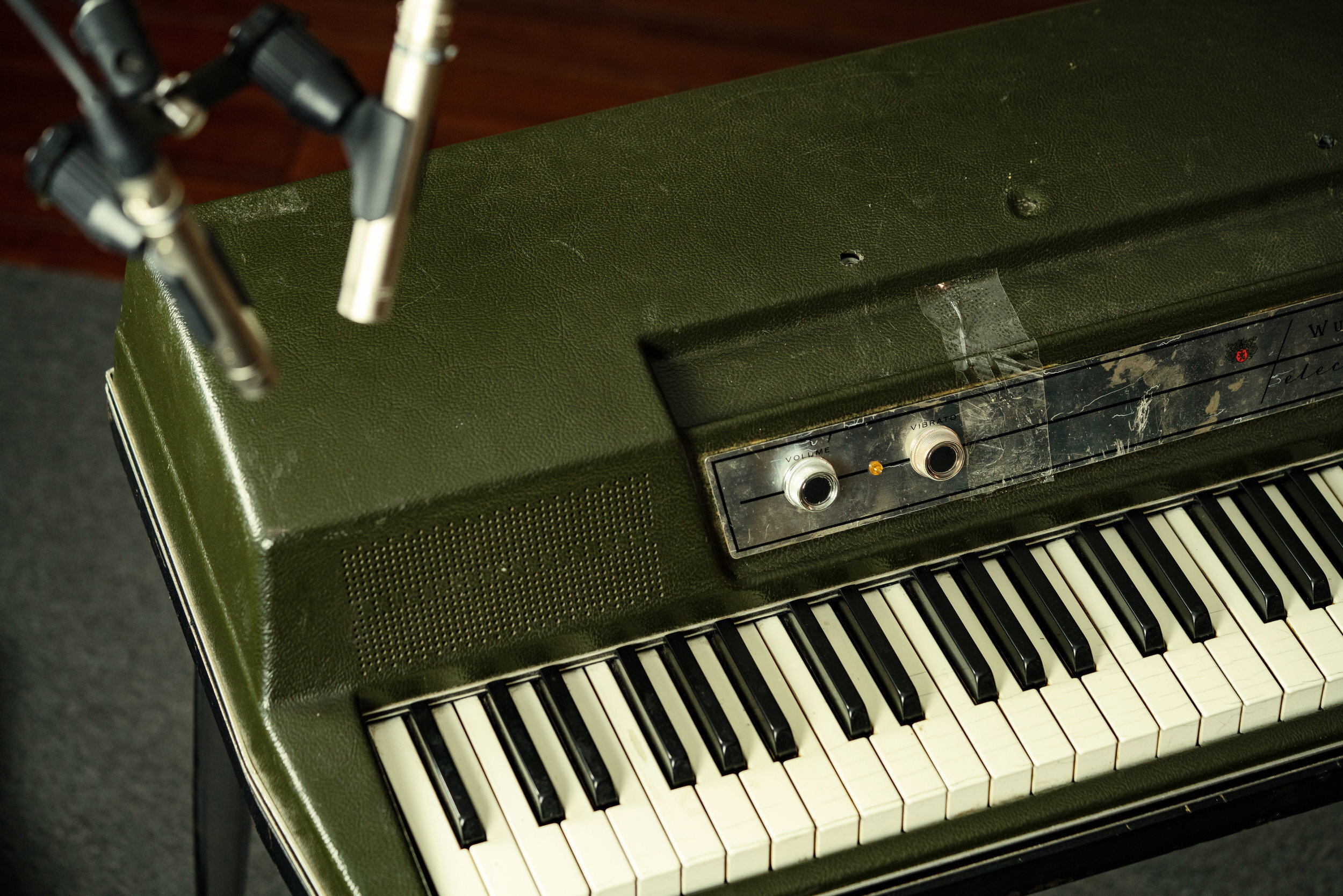The 1980 Wurlitzer 200A Electronic Piano: every Wurlitzer tells a story
I would like to start by saying that in our years of dealing with electronic pianos only a few 1980 Wurlitzer EPs have come into our studio. This has always seemed odd to me until we did a little research and found that Wurlitzer produced far less electronic pianos in those last years- we’re talking on a year-to-year basis only a fraction of what they produced in previous years.
A rare vintage keyboard is always an exciting thing- but sometimes what makes your instrument exceptional may not be immediately apparent. Take, for instance, a 1980 (or later) Wurlitzer 200A. From the outside this instrument may appear very similar to 200A models from previous years but if you look a little closer you will start to notice some real differences.
The Exterior of a 1980 Wurlitzer 200A
Some of the first things you will notice that set a 1980 apart are the cosmetics. All Wurlitzer had textured paint on the keyboard’s base, the pedal housing and the bench - but the 1980 dialed that texture up to eleven. By that I mean, the crevices are deeper, and the texture pops a lot more. This obviously doesn’t affect the sound of course, but it looks cool, and because of the low numbers of 1980 models it is very unique.
The logo on the back. The 1980 Wurlitzer also had an authentic metal ‘badge’ fixed to the back of the lid. While plastic aftermarket replicas of this badge are available for purchase I’ve always stayed away from cosmetically modifying a vintage instrument with a feature it didn’t leave the factory with.
The power socket. Another feature that is unique to late 200A Wurltizers (this may have been present in late 70s Wurlitzers, but it will always be present from 1980 onward) is an IEC socket. A factory installed IEC power socket, as opposed to a later upgraded socket, is a nice thing because you can rest assured that Wurlitzer routed a nice clean hole for the socket and painted over it with original paint.
Inside the 1980 Wurlitzer
When we popped the lid of our 1980 Wurlitzer 200A we started to notice some differences right away. First how clean and new it looked. Okay something born in 1980 is becoming less of a spring chicken these days, but that’s certainly younger than something from 1970, right? So the inside is cleaner. The ceramic speakers also had square magnets, something we have only seen on 1980 or very close to 1980 Wurlitzers. The metal parts were very fresh and free from oxidation. While there are many factors, including where and how the keyboard is stored, that contribute to metal oxidation certainly a younger instrument has a better shot at staying well and this was the case here.
Manufacturing changed for Wurlitzer in 1980
As I mentioned, in 1980 Wurlitzer started to scale back the production of it’s electronic pianos. This means they were no longer frantically trying to build as many as possible to meet demand. They were taking their time- and it shows. In this particular 1980 Wurlitzer that we found, the tolerances and measurements were great. For instance, they keys met the lower capstans almost perfectly on center. The hum shield mounting screws, also on center. The lid sits on the key base more evenly.
In short, an early or mid production Wurlitzer 200/200A is cool, and on these imperfect (but don’t get me wrong amazing) instruments you could find a real gem from any year. But the 1980 Wurlitzers are just rare because of their low numbers, and finding a nice one of those is certainly worthy of adding to the collection, or studio! You may not come across another one like it.
Further Reading
Browse all of our articles on restoring vintage gear. Or, click on an image below.







